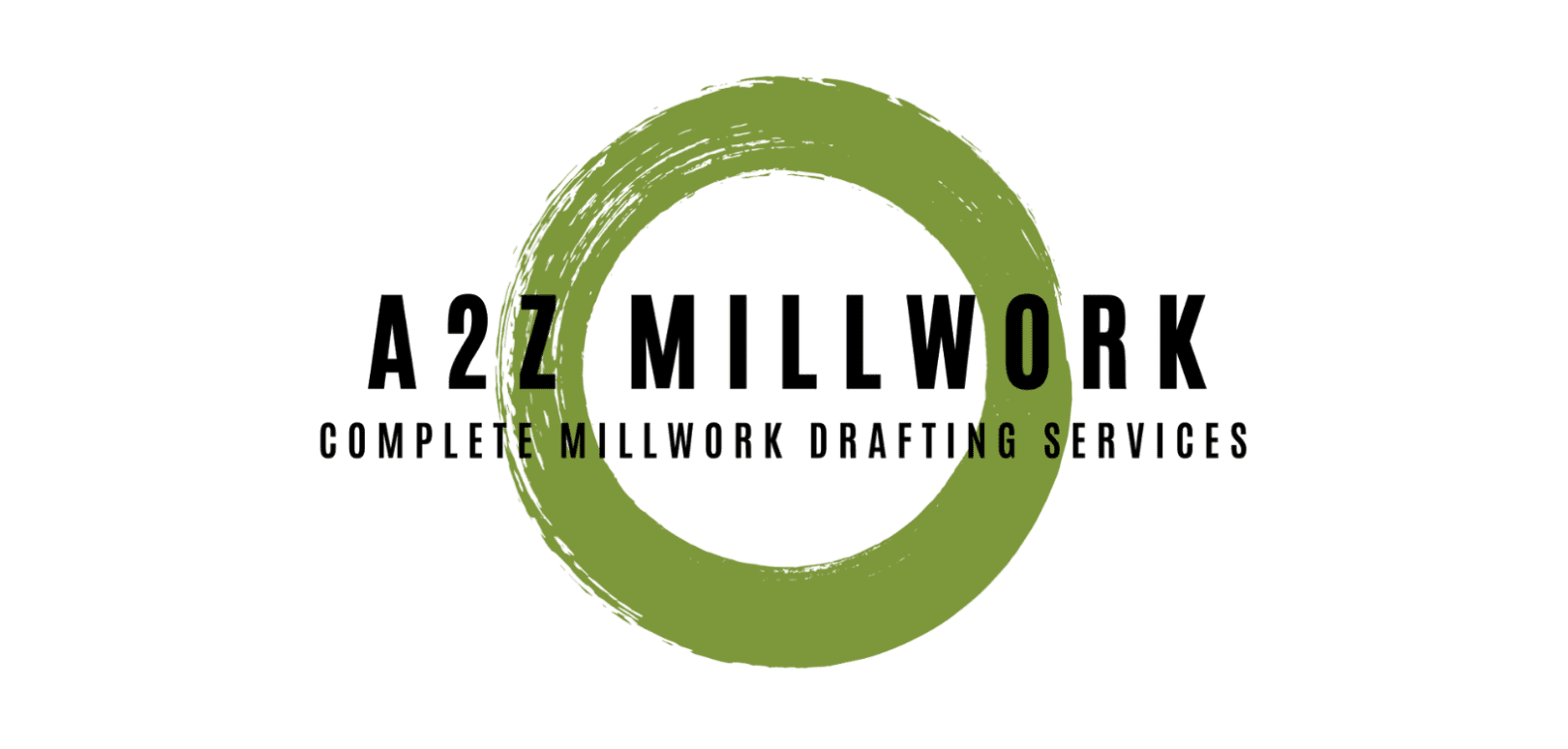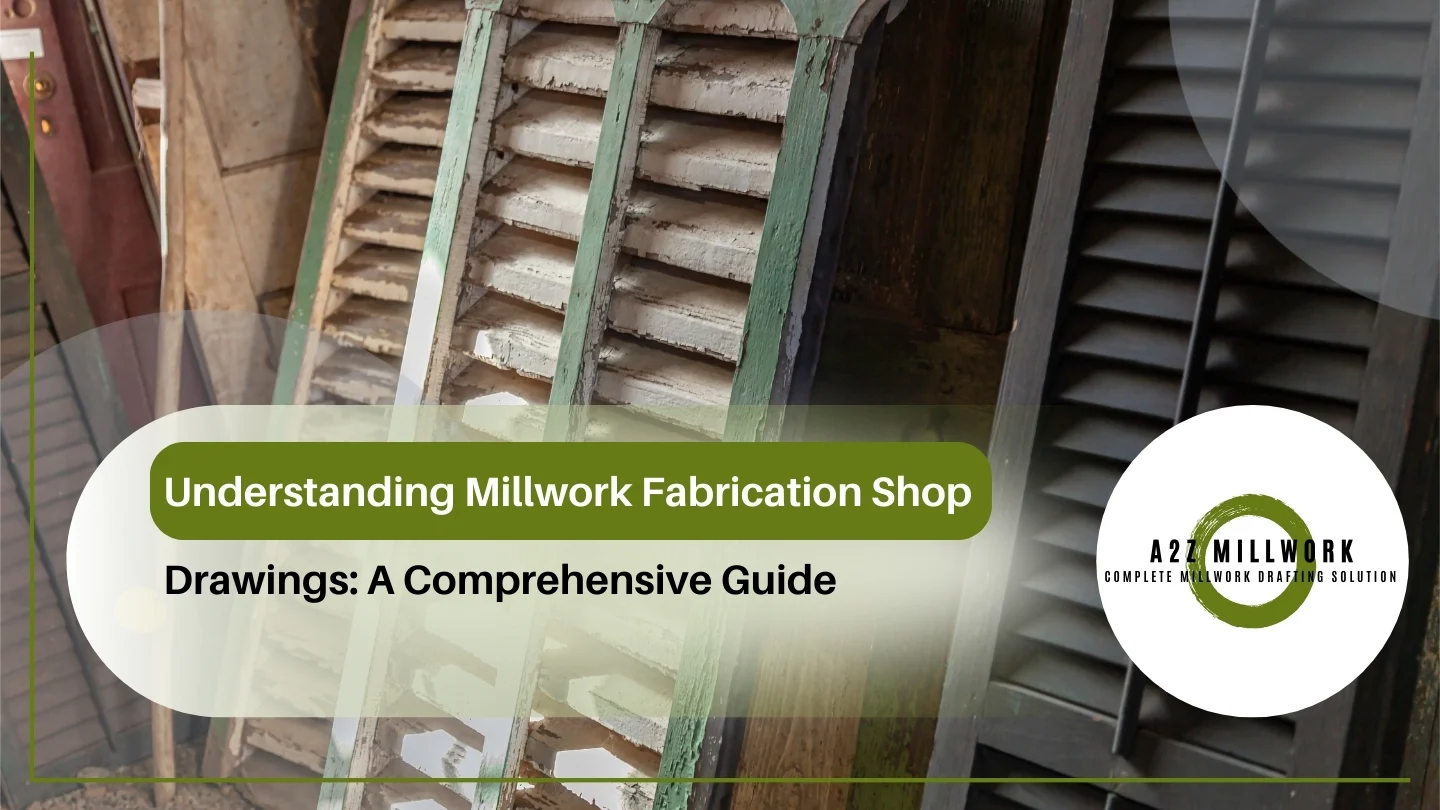Millwork fabrication shop drawings are essential for bringing custom woodwork designs from concept to reality. These drawings act as a bridge between design and production, providing precise details needed for fabrication. For architects, designers, and contractors in the USA, having accurate millwork drawings is crucial in ensuring that projects meet exacting standards and expectations. In this comprehensive guide, we will explore what millwork fabrication shop drawings are, their importance, and how A2Z Millwork Design LLC can help you outsource these services for optimal results.
What Are Millwork Fabrication Shop Drawings?
Millwork fabrication shop drawings are detailed plans created for manufacturing custom woodwork pieces, including cabinetry, moldings, furniture, and trim work. Unlike basic design sketches, these shop drawings contain the technical details that guide manufacturers in creating the actual product.
They typically include:
- Precise dimensions and measurements
- Construction techniques and materials
- Specific hardware and joinery
- Assembly instructions
- Finish details
These detailed specifications ensure that all parties involved, from designers to fabricators, are on the same page, thus reducing errors during production.
Importance of Millwork Fabrication Shop Drawings
In the world of millwork, precision is key. Every custom woodwork piece must fit perfectly within the architectural space, and any errors can lead to costly delays and rework. Millwork shop drawings ensure:
- Accuracy in Design Execution: Millwork fabrication drawings provide a detailed roadmap for fabricators, ensuring that all design aspects are accurately executed.
- Cost and Time Efficiency: Clear drawings eliminate the risk of miscommunication, reducing costly mistakes and speeding up the production process.
- Regulatory Compliance: Drawings can help ensure that the final product meets local building codes and standards.
- Enhanced Collaboration: These drawings facilitate effective communication between architects, designers, and contractors, ensuring that everyone is aligned on the project’s scope.
Types of Millwork Fabrication Drawings
There are several types of drawings used in millwork projects, each serving a different function:
1. Architectural Drawings
These provide an overall view of how millwork components will fit into the architectural space. They focus on the aesthetic aspect, showing how the pieces will integrate with the rest of the design.
2. Shop Drawings
Shop drawings are more detailed than architectural drawings and focus on the technical aspects of fabrication. They include precise dimensions, materials, hardware, and construction methods.
3. Assembly Drawings
Assembly drawings show how different components of a millwork piece come together. They include instructions on joinery, hardware, and the sequence of assembly.
4. Installation Drawings
These drawings provide instructions for installing millwork components on-site, ensuring proper alignment and fitting with architectural elements.
Key Elements in Millwork Fabrication Drawings
Millwork fabrication drawings are not just about aesthetics; they must include essential technical details. Some of the key elements found in these drawings are:
1. Dimensions
Accurate dimensions are the cornerstone of any millwork drawing. These measurements ensure that the finished product will fit precisely within the architectural space.
2. Material Specifications
Drawings must specify the type of wood, veneer, laminate, or any other material used in the project. This ensures consistency in quality and appearance.
3. Construction Details
Information on how the pieces will be constructed is essential. This includes joinery techniques, types of screws or nails, and any other hardware used in the assembly.
4. Finish Details
The finish is a critical aspect of millwork, affecting both aesthetics and durability. Drawings should specify the type of finish (e.g., paint, stain, lacquer) and any special treatments.
5. Hardware
Millwork pieces often require hardware for assembly and installation. The type, size, and placement of hardware must be detailed in the drawings.
Why Accurate Millwork Drawings Matter
Accurate millwork drawings play a crucial role in ensuring that the final product meets client expectations and industry standards. Inaccurate or incomplete drawings can lead to:
- Production errors
- Miscommunication between stakeholders
- Delays in project timelines
- Increased costs due to rework
Having a clear, detailed drawing minimizes these risks and ensures a smooth production process.
The Role of Technology in Millwork Drawings
Advances in technology have revolutionized the process of creating millwork shop drawings. Software like AutoCAD and Microvellum allows designers to create highly detailed 3D models that can be easily converted into shop drawings. This technology ensures that the drawings are not only accurate but also easy to interpret by fabricators.
1. CAD Software
Computer-Aided Design (CAD) software, such as AutoCAD, is widely used in millwork drafting. CAD allows designers to create precise 2D and 3D models, which can then be converted into detailed shop drawings.
2. BIM (Building Information Modeling)
BIM software takes the design process a step further by integrating all aspects of a building’s design, including millwork, into a single model. This allows for better coordination between architects, engineers, and millwork fabricators.
Benefits of Outsourcing Millwork Shop Drawings
Outsourcing millwork shop drawings can offer several advantages, particularly for companies looking to optimize costs and improve efficiency:
1. Access to Expertise
Outsourcing gives you access to experienced drafters and designers who specialize in millwork. These professionals are skilled in using the latest software and tools to create accurate and detailed drawings.
2. Cost Savings
By outsourcing, companies can avoid the costs associated with hiring in-house drafting staff and purchasing expensive design software.
3. Improved Efficiency
Outsourcing allows companies to focus on their core competencies, while experts handle the drafting process. This leads to faster project completion and better overall efficiency.
4. Scalability
Outsourcing provides flexibility to scale up or down depending on project demands. This ensures that you have the right resources available for each project, without the overhead costs of maintaining a large in-house team.
How to Choose the Right Millwork Drafting Partner
Selecting the right outsourcing partner is crucial to ensuring that your millwork shop drawings meet your expectations. Some factors to consider include:
- Experience in Millwork Design: Choose a partner with extensive experience in millwork projects, particularly in your specific niche.
- Technical Expertise: Ensure that the company has a deep understanding of the latest drafting software and techniques.
- Attention to Detail: Millwork requires precision, so your partner must be detail-oriented and able to produce accurate, error-free drawings.
- Communication and Collaboration: Look for a partner who is easy to communicate with and can collaborate effectively with your team.
Conclusion
Millwork fabrication shop drawings are the backbone of any custom woodworking project. They provide the detailed information necessary to bring your designs to life, ensuring accuracy, efficiency, and quality in the fabrication process. With the right expertise and technology, these drawings can transform concepts into beautiful, functional pieces of millwork.
At A2Z Millwork Design LLC, we specialize in providing high-quality millwork shop drawings for residential and commercial projects across the United States. Whether you’re working on custom cabinetry, moldings, or furniture, our team of experts is here to help you bring your vision to life with precision and efficiency.
By choosing A2Z Millwork Design, you can ensure that your projects are executed flawlessly, on time, and within budget. We combine technical expertise with a commitment to excellence, making us the go-to choice for millwork shop drawings in the USA.



